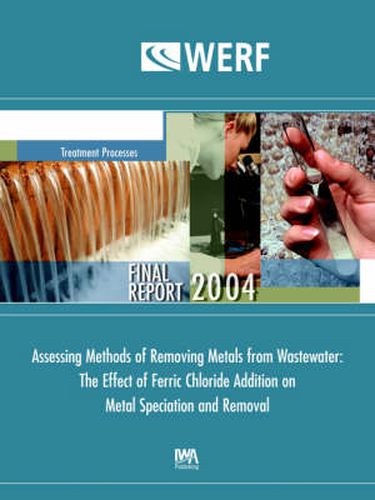Readings Newsletter
Become a Readings Member to make your shopping experience even easier.
Sign in or sign up for free!
You’re not far away from qualifying for FREE standard shipping within Australia
You’ve qualified for FREE standard shipping within Australia
The cart is loading…






The presence of cationic pollutant metals in municipal wastewater effluent is a concern because stringent discharge requirements cannot always be met with conventional treatment methods. Attempts to improve metal removal are often unsuccessful because a significant fraction of the cationic metals are complexed by the synthetic chelating agent ethylenediamine tetraacetic acid (EDTA).
To identify practical approaches for improving metal removal, an analytical method for measuring metal-EDTA complexes was used to survey metal speciation at a series of wastewater treatment plants. Following these analyses, bench-scale experiments were conducted. The survey data indicated that pollutant metal-EDTA complexes account for a significant fraction of the dissolved metals in wastewater. The bench-scale studies indicated that ferric chloride addition improves the removal of copper and zinc by approximately 20%.
To test the results of the bench-scale experiments, a full-scale experiment was conducted by interrupting chemical addition at a municipal wastewater treatment plant that normally adds ferric chloride during primary treatment. Results indicated that ferric chloride addition had a slight impact on metal speciation but no effect on metals removal. The lack of an effect was attributed to changes in metal speciation that occurred during primary treatment irrespective of ferric chloride addition.
$9.00 standard shipping within Australia
FREE standard shipping within Australia for orders over $100.00
Express & International shipping calculated at checkout
The presence of cationic pollutant metals in municipal wastewater effluent is a concern because stringent discharge requirements cannot always be met with conventional treatment methods. Attempts to improve metal removal are often unsuccessful because a significant fraction of the cationic metals are complexed by the synthetic chelating agent ethylenediamine tetraacetic acid (EDTA).
To identify practical approaches for improving metal removal, an analytical method for measuring metal-EDTA complexes was used to survey metal speciation at a series of wastewater treatment plants. Following these analyses, bench-scale experiments were conducted. The survey data indicated that pollutant metal-EDTA complexes account for a significant fraction of the dissolved metals in wastewater. The bench-scale studies indicated that ferric chloride addition improves the removal of copper and zinc by approximately 20%.
To test the results of the bench-scale experiments, a full-scale experiment was conducted by interrupting chemical addition at a municipal wastewater treatment plant that normally adds ferric chloride during primary treatment. Results indicated that ferric chloride addition had a slight impact on metal speciation but no effect on metals removal. The lack of an effect was attributed to changes in metal speciation that occurred during primary treatment irrespective of ferric chloride addition.